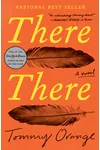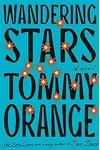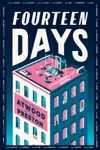Picture a storyteller who spun a vibrant tapestry of urban Native American life, shattering stereotypes with every page—meet Tommy Orange! A proud member of the Cheyenne and Arapaho Tribes of Oklahoma, Orange burst onto the literary scene with his debut novel, There There, a Pulitzer Prize finalist that redefined Native American fiction. His stories pulse with raw emotion, weaving together voices that capture the complexity of identity and belonging in modern cities.
Born in Oakland, California, Orange’s unique perspective as a Native American navigating urban spaces fuels his work. His writing doesn’t just tell stories—it builds empathy, inviting readers to walk in the shoes of characters who are as real as they are unforgettable. Let’s dive into the life, works, and impact of this literary trailblazer!
The Making of Tommy Orange
Tommy Orange was born on January 19, 1982, in Oakland, to a Cheyenne and Arapaho father and a white mother. Growing up, he straddled two worlds, grappling with a sense of being “both and neither,” as he once described. His father, fluent in Cheyenne, was a Native American Church leader, while his mother embraced evangelical Christianity, creating a complex cultural backdrop. Reading wasn’t Orange’s thing as a kid—he was more into roller hockey and music. But after earning a sound engineering degree, he landed a job at a used bookstore, where novels by Louise Erdrich and Clarice Lispector sparked a passion for storytelling. This led him to an MFA at the Institute of American Indian Arts, where he honed his craft.
Tommy Orange’s Unforgettable Stories
Orange’s debut, There There (2018), is a polyphonic masterpiece that follows twelve Native American characters in Oakland as their lives converge at a powwow. The novel tackles heavy themes—alcoholism, identity, historical trauma—with a vibrant, empathetic lens. Its prologue, a searing essay on Native history, sets the tone for a story that’s both modern and deeply rooted. Critics hailed it as a “new kind of American epic,” earning a PEN/Hemingway Award and a spot on the Pulitzer shortlist.
His follow-up, Wandering Stars (2024), expands the saga, tracing a Cheyenne family’s journey from historical trauma to contemporary struggles. Inspired by a museum visit in Sweden, where Orange saw Cheyenne artifacts, the novel blends past and present with haunting prose. Both works showcase his signature style: multiple voices, raw honesty, and a knack for making the urban Native experience feel universal yet specific. Orange’s characters, like Orvil Red Feather or Jacquie Red Feather, aren’t stereotypes—they’re flawed, human, and searching for connection.
His stories resist the “monolithic” view of Native identity, as Orange puts it, celebrating the 70% of Native Americans living in cities. By focusing on urban settings, he challenges the rural nostalgia often tied to Native narratives, proving “the land is everywhere or nowhere.”
Why Tommy Orange Matters
Tommy Orange has revolutionized Native American literature by amplifying urban Indigenous voices, a perspective long overlooked. His work dismantles outdated tropes, showing Native people as dynamic, modern, and diverse. As part of a new wave of Indigenous writers like Terese Marie Mailhot and Joshua Whitehead, he’s reshaping the literary canon. His novels don’t just entertain—they foster empathy, urging readers to see Native Americans as neighbors, not historical relics. Awards like the 2025 Aspen Words Literary Prize for Wandering Stars cement his influence, inspiring young writers to tell their own stories.
- Born: January 19, 1982, Oakland, California
- Key Works: There There (2018), Wandering Stars (2024)
- Awards: PEN/Hemingway Award, 2019 American Book Award, 2025 Aspen Words Literary Prize
- Tribe: Cheyenne and Arapaho Tribes of Oklahoma
Ready to dive into Tommy Orange’s world? Snag There There and lose yourself in his bold, heartfelt stories of urban Native life!




